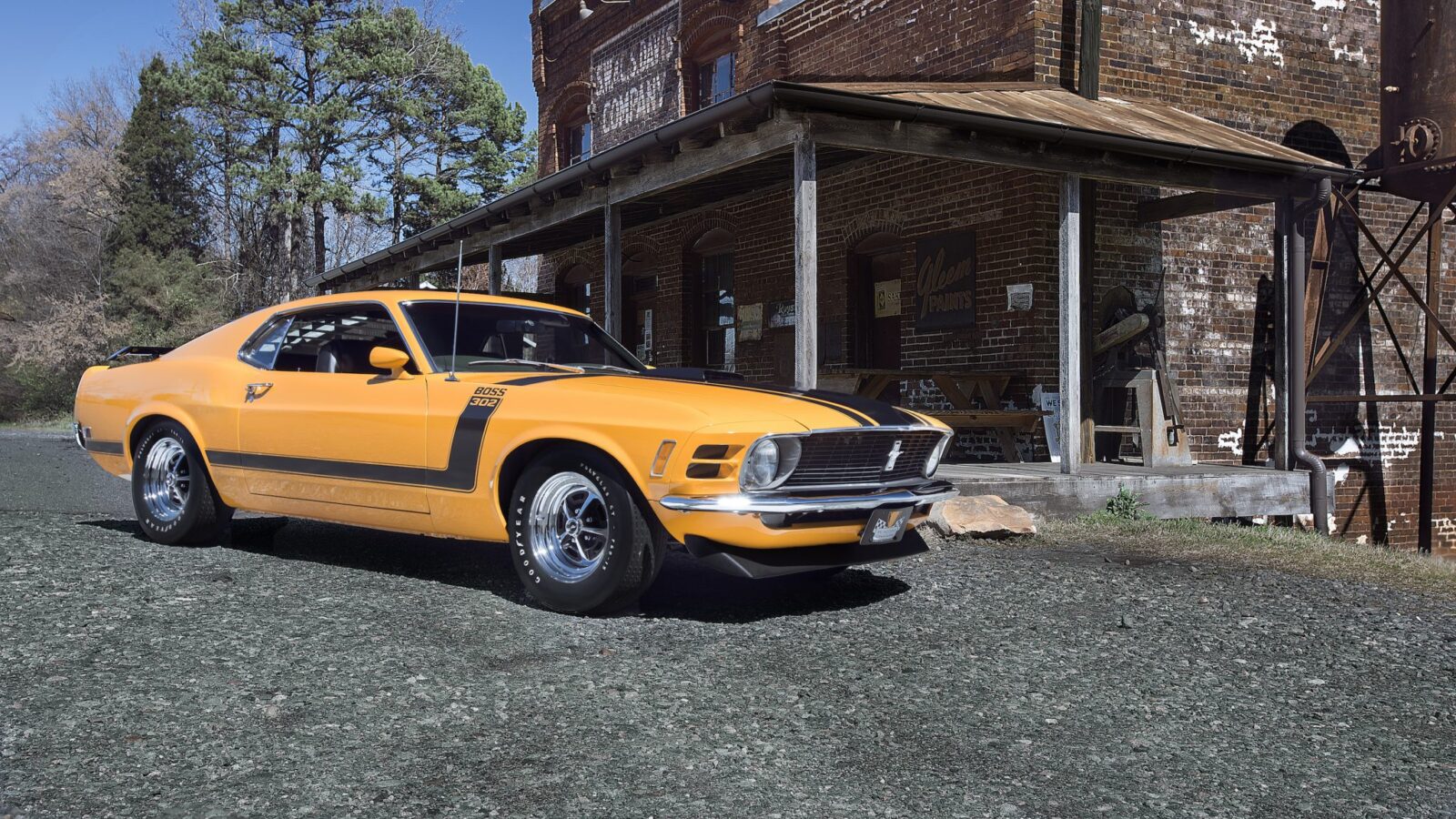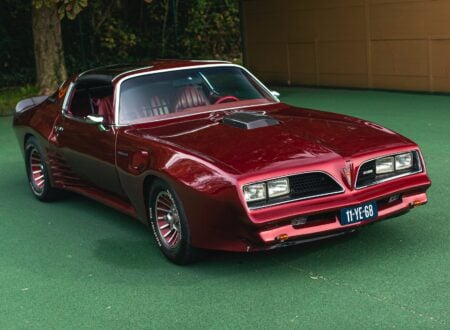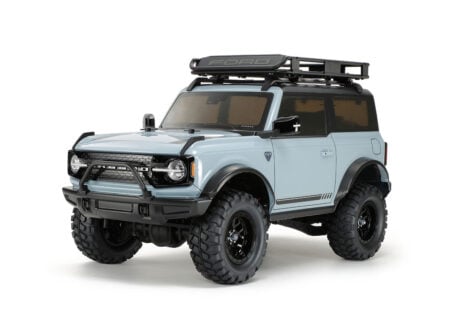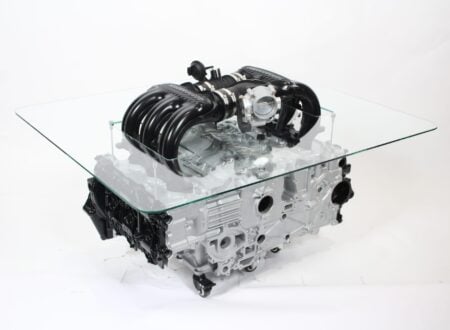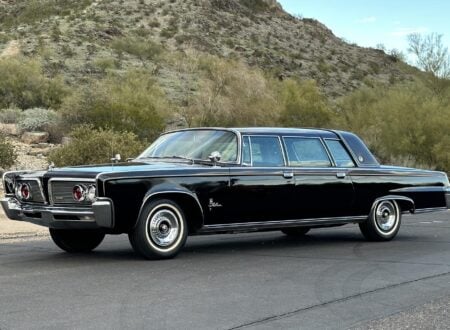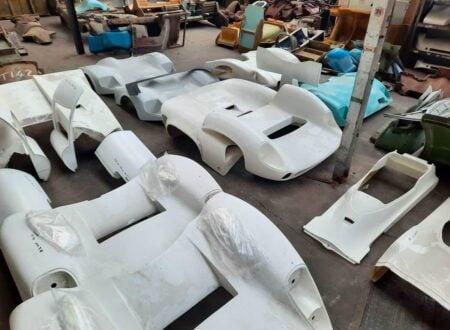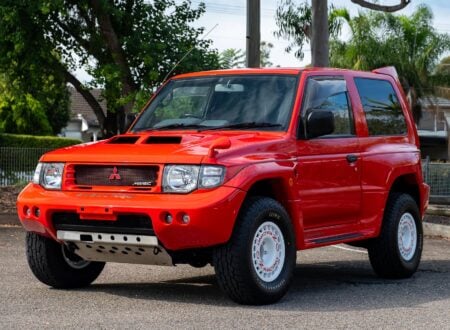The Ford Mustang Boss 302 was largely the brainchild of two former GM employees – Larry Shinoda and Semon “Bunkie” Knudson. Knudson had been named President of Ford in 1968, he brought Shinoda over from GM to breathe life into the company’s model range – starting with the original pony car.
The Story of the Ford Mustang Boss 302
One of Knudson’s first projects was a new high-performance Mustang, he told his designers “I want to design a car that’s the coolest Mustang out there. I don’t want somebody else’s name on it, like a Shelby.”
Shinoda set to work updating the look of the Mustang, which had been introduced in 1964, triggering an arms race amongst American car manufacturers to build the fastest and most powerful pony car. Larry’s influence at GM had been significant, he developed the Mako Shark show car that he would later develop into the C3 Corvette, and he’d worked closely with Bill Mitchell and Zora Arkus-Duntov on earlier Corvette designs from 1956 till he left to move to Ford in ’68.
The name “Boss” is said to have come about almost as a joke, the project to develop the car was a secret, and as Shinoda was working under the direct instruction of Knudson he called it “the Boss’s car”.
For its first generation in 1969, Ford offered the Boss in two major versions – the Boss 302 and the Boss 429. Both cars had engine sizes dictated by the racing series they were designed to homologate for, the 302 cubic inch V8 was destined to race in the SCCA Trans-Am series which was limited to 5 litres, and the 429 cubic inch (7 litre) V8 was designed for NASCAR competition.
Engineers at Ford built the high performance 302 V8 by combining the Ford Windsor 302 cubic inch motor and pairing it with the Ford Cleveland (351 cubic inch) heads. Cleveland heads had larger valves, larger ports, and the same basic bolt pattern as the Windsor – although the passages for coolant did have to be modified slightly.
In road-going trim this new engine could produce 290 hp at 5200 rpm with 290 lbf.ft of torque at 4300 rpm, however it could be revved right the way through to 6250 rpm.
Shinoda further modified the car from the stock model by removing the non-functioning air intakes behind the doors, he added a front and rear spoiler, and the iconic Boss stripes along the side of the hood and up over the hood.
The 1970 model came with a new front end, new stripes, with a new twin exhaust, new suspension, and a Hurst shifter. The 1970 model could do the 0-60 mph dash in 6.9 seconds and run a 14.6 second quarter mile with a 98 mph trap speed.
The first generation Boss Mustangs would only be in production for 2 years – 1969 and 1970. The Boss 302 is most famous for being the foundation of the cars run by Bud Moore in 1969 and 1970 in the SCCA Trans-Am series. The cars would win the Championship in 1970 against stiff competition, a popular victory that capped the short-lived Ford careers of Knudson and Shinoda, who had left the company in late 1969.
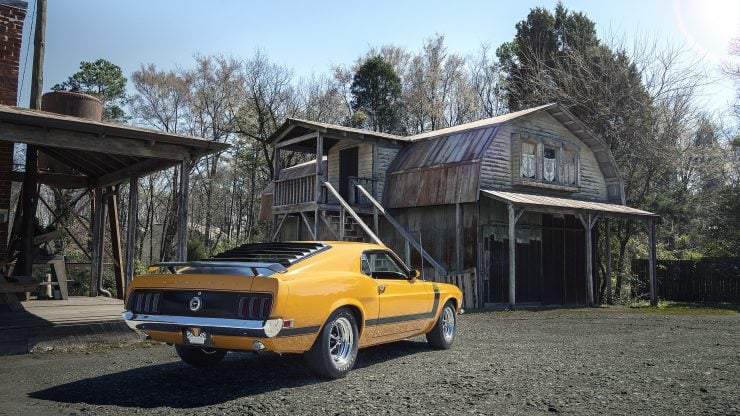
The 1970 Ford Mustang Boss 302 Shown Here
The car you see here was fully restored in 2010 and is still fitted with its original 302 inch Windsor V8, Toploader 4-speed manual transmission, competition suspension, 9-inch rear axle, correct Traction-Lok differential, 15-inch Magnum 500 wheels, and its had the correct Grabber Orange paint applied.
It’s now being offered out of RK Motors Charlotte with a base value of $87,000 USD. It comes with a framed Elite Marti Auto Works Report for peace of mind, and they’ll even accept trade-ins.
If you’d like to read more about it or enquire after it, you can click here to visit the official listing
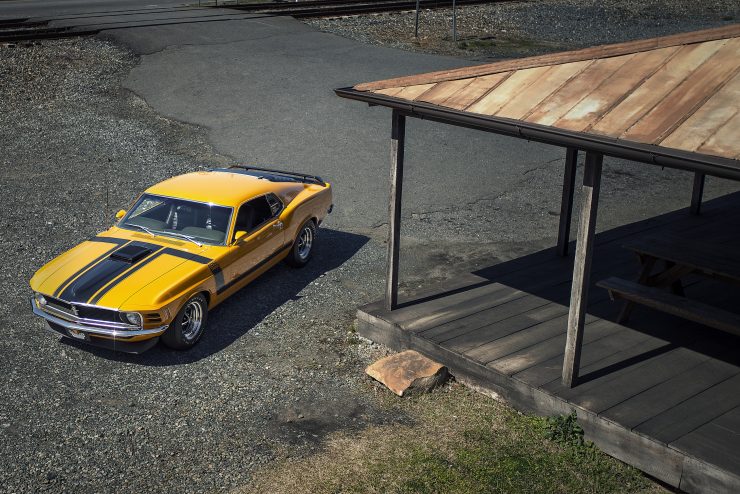
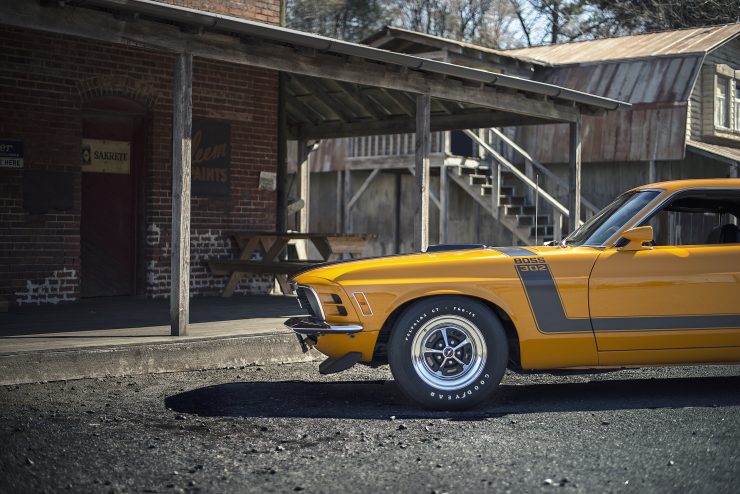
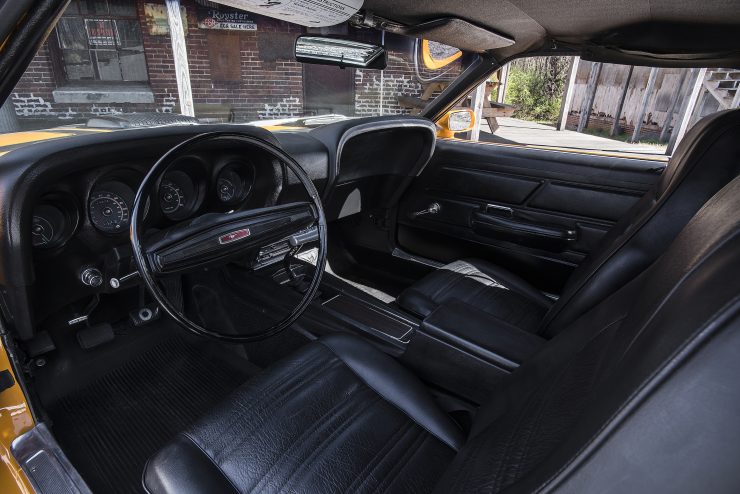
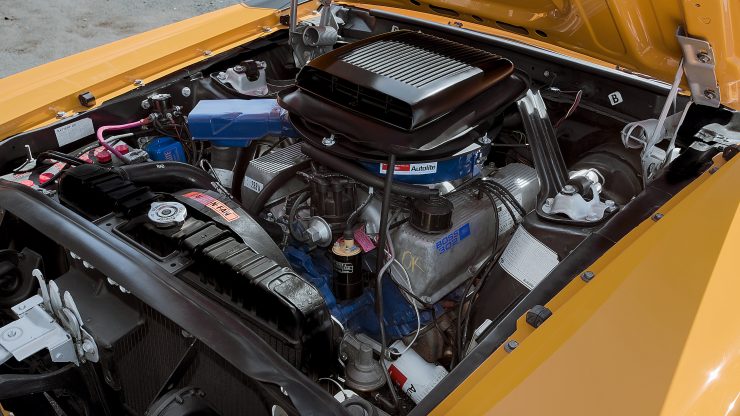
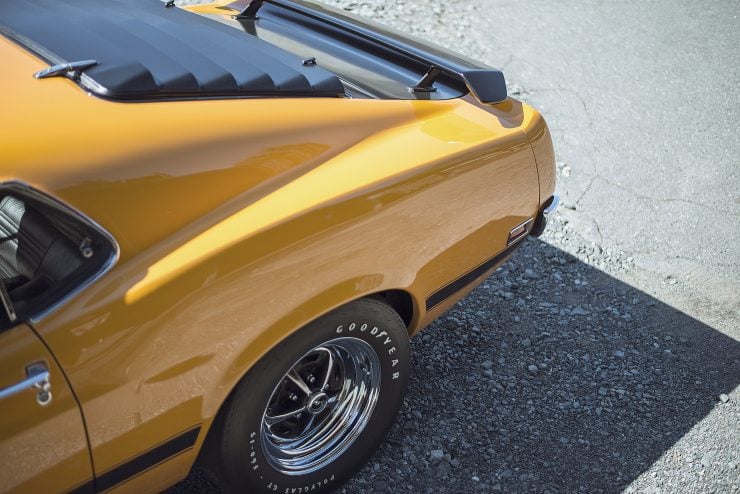
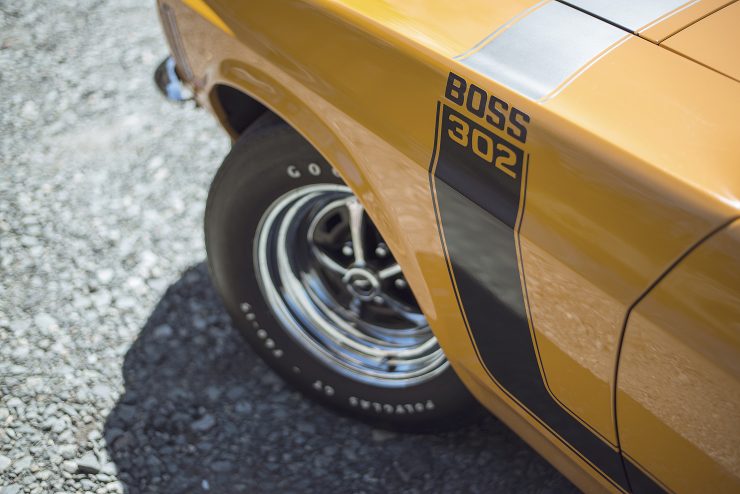
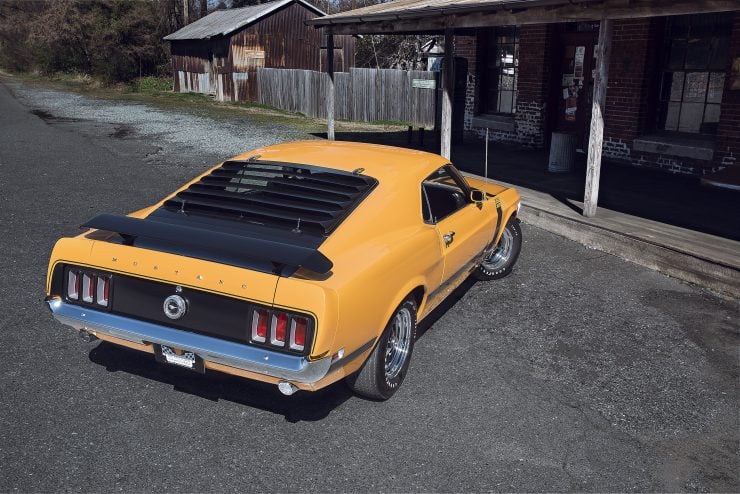
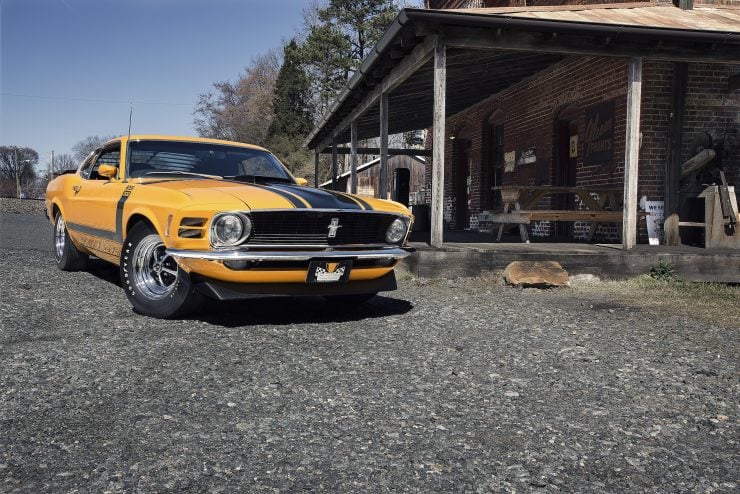
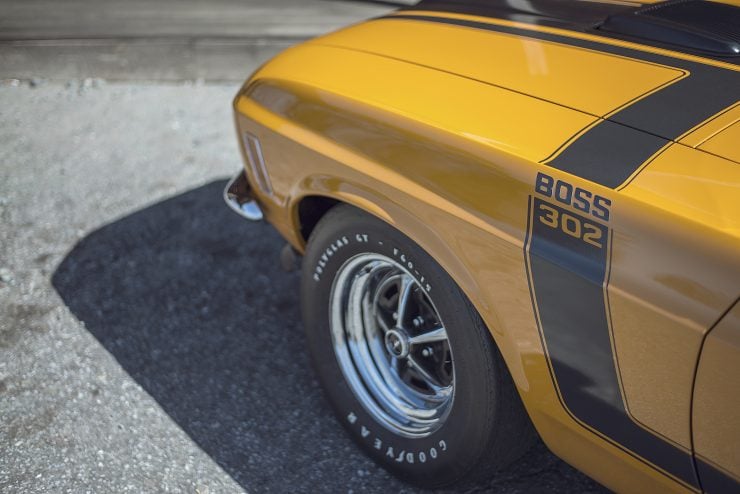

Articles that Ben has written have been covered on CNN, Popular Mechanics, Smithsonian Magazine, Road & Track Magazine, the official Pinterest blog, the official eBay Motors blog, BuzzFeed, Autoweek Magazine, Wired Magazine, Autoblog, Gear Patrol, Jalopnik, The Verge, and many more.
Silodrome was founded by Ben back in 2010, in the years since the site has grown to become a world leader in the alternative and vintage motoring sector, with well over a million monthly readers from around the world and many hundreds of thousands of followers on social media.

